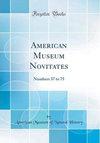新墨西哥州上白垩纪(Turonian)的刺石(ammono总科:棘角兽总科)的下颚
IF 1.1
3区 环境科学与生态学
Q3 BIODIVERSITY CONSERVATION
引用次数: 1
摘要
最近,在新墨西哥州桑多瓦尔县曼科斯页岩卡莱尔区发现了一种与晚白垩世(Turonian)鹦鹉石Spathites puercoensis (Herrick and Johnson, 1900)有关的石灰石结块中发现了一个下颌骨。它几乎是完整的,包括爪和沿中线的铰链。保存较好的钢板,左侧(根据其在生活中的位置),形状大致为三角形,外侧边缘呈宽圆形,后边缘呈窄圆形,前边缘呈弱凹。它宽26.2毫米,长33.0毫米。在一起,左和右板形成一个盾状的形状,在顶端略微向前伸出。颚宽与长度之比(26.2 mm × 2 / 33.0 mm)为1.59。近爪由黄橙色方解石组成,覆盖着平行于外侧和后缘的边缘肋骨,向后端变得更加突出。根据对颌骨长度和轮齿高度的比较,这个颌骨很可能属于相关的菊石,并且可以舒适地放入身体腔室,这表明它的功能是颌骨,而不是盖。这是Spathites属菊石颚骨的首次报道,也是新墨西哥州菊石颚骨的首次报道。本文章由计算机程序翻译,如有差异,请以英文原文为准。
Lower Jaw of Spathites (Ammonoidea: Acanthoceratoidea) from the Upper Cretaceous (Turonian) of New Mexico
ABSTRACT A lower jaw was recently discovered in a limestone concretion in association with the Late Cretaceous (Turonian) ammonite Spathites puercoensis (Herrick and Johnson, 1900) from the Carlile Member of the Mancos Shale in Sandoval County, New Mexico. It is nearly complete and comprises the aptychus with a hinge along the midline. The better-preserved plate, the left (according to its position in life), is roughly triangular in shape with a broadly rounded lateral margin, a narrowly rounded posterior margin, and a weakly concave anterior margin. It is 26.2 mm wide and 33.0 mm long. Together, the left and right plates form an escutcheonlike shape that projects slightly forward at the apex. The ratio of jaw width to length (26.2 mm × 2 / 33.0 mm) equals 1.59. The aptychus consists of yellow-orange calcite and is covered with comarginal ribs that parallel the lateral and posterior margins and become more prominent toward the posterior end. It is likely that this jaw belongs to the associated ammonite and would have comfortably fit inside the body chamber, based on a comparison of the length of the jaw and the whorl height, suggesting that it functioned as a jaw, rather than as an operculum. It is the first report of an ammonite jaw in the genus Spathites and the first reported occurrence of an ammonite jaw from New Mexico.
求助全文
通过发布文献求助,成功后即可免费获取论文全文。
去求助
来源期刊

American Museum Novitates
环境科学-动物学
CiteScore
3.00
自引率
6.70%
发文量
8
审稿时长
>36 weeks
期刊介绍:
The Novitates (Latin for "new acquaintances"), published continuously and numbered consecutively since 1921, are short papers that contain descriptions of new forms and reports in zoology, paleontology, and geology.
 求助内容:
求助内容: 应助结果提醒方式:
应助结果提醒方式:


